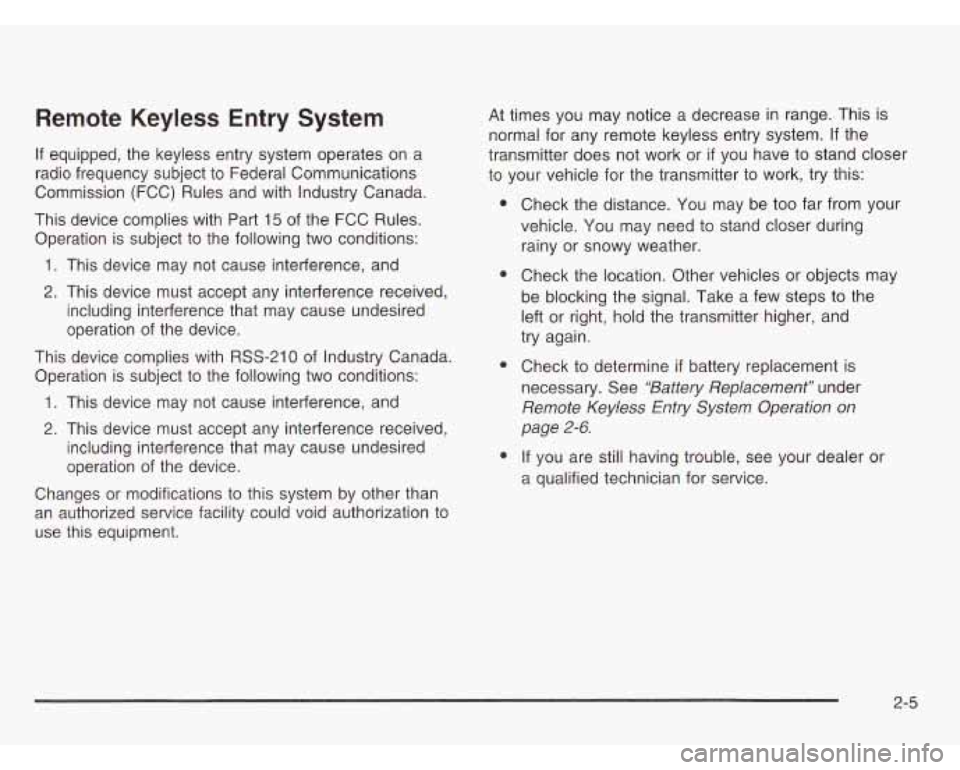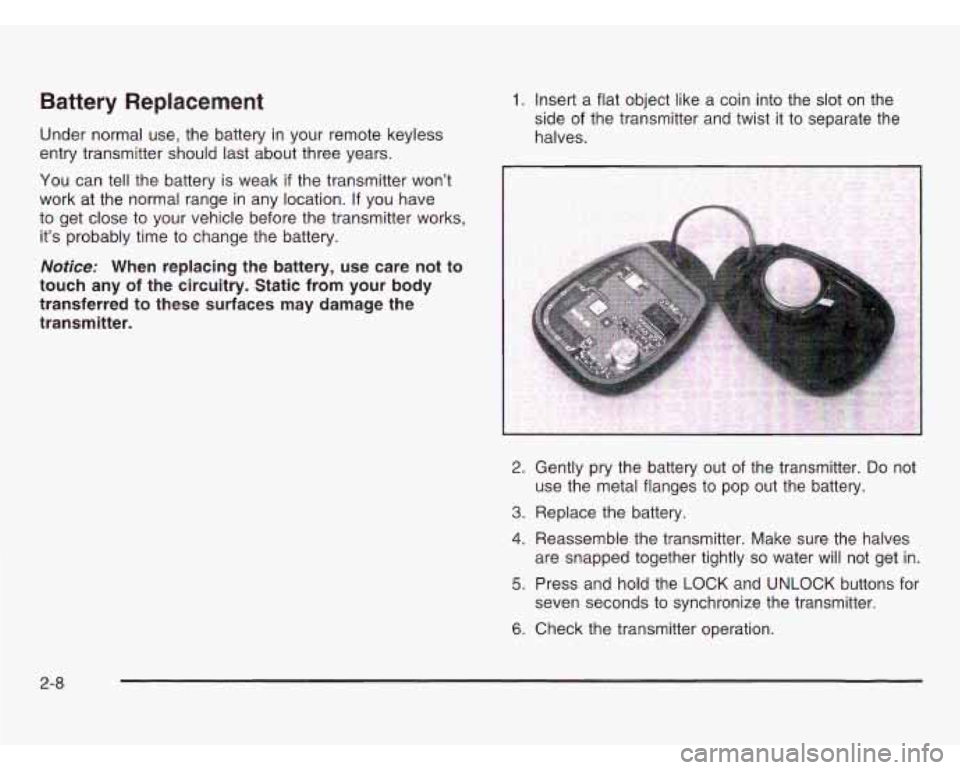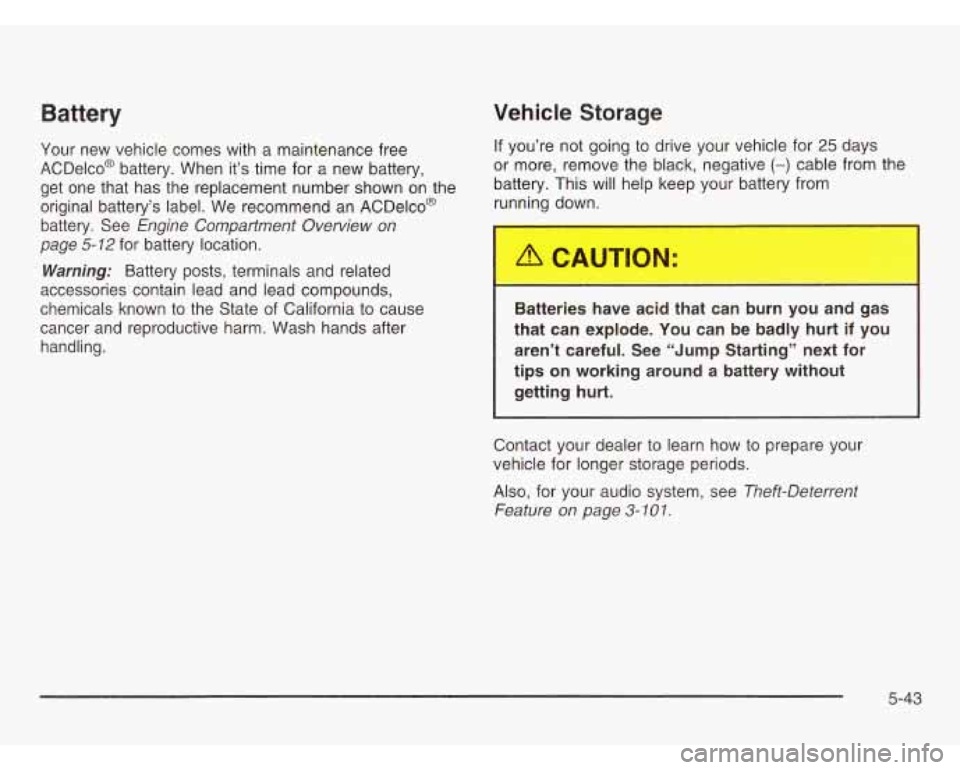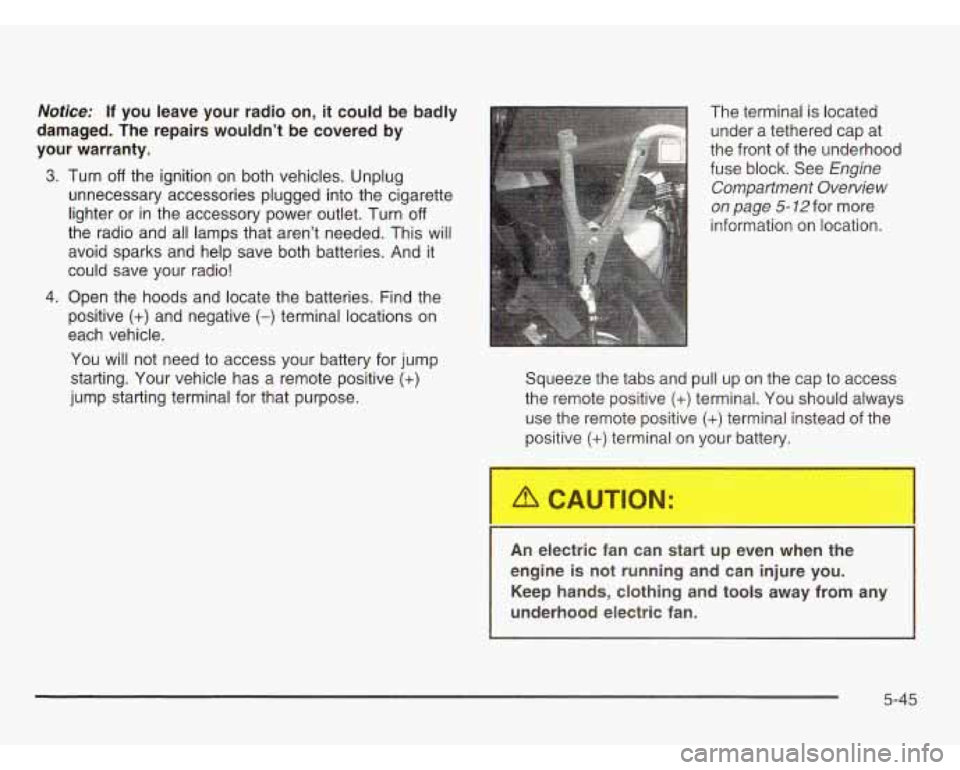battery location OLDSMOBILE SILHOUETTE 2003 Owners Manual
[x] Cancel search | Manufacturer: OLDSMOBILE, Model Year: 2003, Model line: SILHOUETTE, Model: OLDSMOBILE SILHOUETTE 2003Pages: 466, PDF Size: 21.55 MB
Page 90 of 466

Remote Keyless Entry System
If equipped, the keyless entry system operates on a
radio frequency subject to Federal Communications
Commission (FCC) Rules and with Industry Canada.
This device complies with Part
15 of the FCC Rules.
Operation is subject to the following two conditions:
1. This device may not cause interference, and
2. This device must accept any interference received,
including interference that may cause undesired
operation of the device.
This device complies with
RSS-210 of Industry Canada.
Operation is subject to the following two conditions:
1. This device may not cause interference, and
2. This device must accept any interference received,
including interference that may cause undesired
operation of the device.
Changes or modifications to this system by other than
an authorized service facility could void authorization to
use this equipment. At
times you may notice a decrease in range. This is
normal for any remote keyless entry system.
If the
transmitter does not work or
if you have to stand closer
to your vehicle for the transmitter to work, try this:
e
e
e
e
Check the distance. You may be too far from your
vehicle. You may need to stand closer during
rainy or snowy weather.
Check the location. Other vehicles or objects may
be blocking the signal. Take a few steps to the
left or right, hold the transmitter higher, and
try again.
Check to determine
if battery replacement is
necessary. See
"Battery Replacement" under
Remote Keyless Entry System Operation on
page
2-6.
If you are still having trouble, see your dealer or
a qualified technician for service.
Page 93 of 466

Battery Replacement
Under normal use, the battery in your remote keyless
entry transmitter should last about three years.
You can tell the battery is weak if the transmitter won’t
work at the normal range in any location.
If you have
to get close to your vehicle before the transmitter works,
it’s probably time to change the battery.
Notice: When replacing the battery, use care not to
touch any of the circuitry. Static from your body
transferred to these surfaces may damage the
transmitter.
1. Insert a flat object like a coin into the slot on the
side of the transmitter and twist
it to separate the
halves.
2. Gently pry the battery out of the transmitter. Do not
3. Replace the battery.
4. Reassemble the transmitter. Make sure the halves
use the
metal flanges to pop out the battery.
are snapped together tightly
so water will not get in.
5. Press and hold the LOCK and UNLOCK buttons for
6. Check the transmitter operation.
seven seconds
to synchronize the transmitter.
2-8
Page 350 of 466

Battery Vehicle Storage
Your new vehicle comes with a maintenance free
ACDelco@ battery. When it’s time for a new battery,
get one that has the replacement number shown on the
original battery’s label. We recommend an ACDelco@ battery. See
Engine Comparfment Overview on
page
5-72 for battery location.
Warning: Battery posts, terminals and related
accessories contain lead and lead compounds,
chemicals known to the State of California to cause
cancer and reproductive harm. Wash hands after
handling.
If you’re not going to drive your vehicle for 25 days
or more, remove the black, negative
(-) cable from the
battery. This will help keep your battery from
running down.
Batteries have acid that can burn you and gas
that can explode. You can be badly hurt
if you
aren’t careful. See “Jump Starting” next for
tips on working around a battery without
getting hurt.
Contact your dealer to learn how to prepare your
vehicle for longer storage periods.
Also, for your audio system, see
Theft-Deterrent
Feature
on page 3- IO 1.
5-43
Page 352 of 466

Notice: If you leave your radio on, it could be badly
damaged. The repairs wouldn’t be covered by
your warranty.
3.
4.
Turn off the ignition on both vehicles. Unplug
unnecessary accessories plugged into the cigarette
lighter or in the accessory power outlet. Turn
off
the radio and all lamps that aren’t needed. This will
avoid sparks and help save both batteries. And it
could save your radio!
Open the hoods and locate the batteries. Find the
positive
(+) and negative (-) terminal locations on
each vehicle.
You will not need to access your battery for jump
starting. Your vehicle has a remote positive
(+)
jump starting terminal for that purpose. The terminal is located
under a tethered cap at
the front of the underhood
fuse block. See
Engine
Compartment Overview
on page
5- 12 for more
information on location.
Squeeze the tabs and pull up
on the cap to access
the remote positive
(+) terminal. You should always
use the remote positive
(+) terminal instead of the
positive (+) terminal on your battery.
An electric fan can start up ever !hen the
engine is not running and can injure you.
Keep hands, clothing and tools away from any
underhood electric fan.
5-45